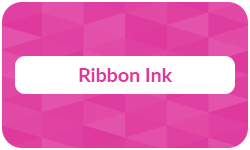
Solid inks are very practical. They often do not take up much space in the storage, and they can be stored in any quantity, since drying out is not a problem. Therefore, it is not surprising that many people, especially professional printing services, have taken a liking to this type of printing ink. The following article will dive into the topic of ribbon inks, their applications, and their advantages.
Definition: Ribbon ink
Ribbon ink is a type of solid ink that works in a very similar way. The pigment is incorporated into a ribbon made of polymer, wax, or fabric and transferred to the medium through heat using one of two types of printers:
- thermal transfer printer
- dot matrix printer
The heat liquefies the ink in the ribbon before it is stamped onto the paper.
Note: The terms ribbon ink and ink ribbon are often used synonymously. However, technically the ink ribbon is the material that holds the ink, while ribbon ink is the actual ink incorporated into the ribbon.
Printing services at BachelorPrint
- Individual solutions & personal support
- High print quality & fast production times
- Wide range of print products for every need
Learn more!
Applications and limitations
Originally, inked ribbons were used in typewriters, where the ribbon was led along the hammers, which then stamped the ink onto the paper. In modern ribbon ink printers, the ribbon is moved back and forth between the printhead and the medium to be printed on, creating the image. Ribbon ink can be printed on various surfaces, such as plastic labels or fabrics. However, it is mostly used exclusively in paper printing, since other printmaking processes might be more suited for different materials.
Limitations of ribbon ink are found on non-receptive surfaces. As the ink is forced onto the medium with power and heat, the medium itself needs to accept the ink easily. Therefore, materials like non-prepared plastics, metal, or glass are impossible to print on. For these kinds of materials, sublimation ink is more suitable.
Advantages and disadvantages
Ribbon ink has many advantages and disadvantages to consider before deciding on using it.
Advantages
- Durable and resistant prints
- Versatility (use for different materials)
- High efficiency and cost-effectiveness
- Environmentally friendly (if reinkable)
- Simple to replace
Disadvantages
- Limited range of color & compatibility
- Lower print quality
- Printers are slow & noisy
- Less versatile in applications
- Prone to smudging and color fading
- Environmental issues due to chemicals
High-quality color copies from just CAN$0.25
- Choose from different paper formats & paper weights
- Configure finishing options & add any extras you need
- Easy online ordering process with delivery to your doorstep
Learn more!
FAQs
Ribbon ink is a type of solid ink that uses ink-soaked ribbons made from fabric, wax, or polymers. The ribbons are then heated in the printing process, and the image is transferred with force onto the medium.
Originally, ribbon ink was the base of every typewriter. The ink-soaked ribbon was led along the tiny hammers, which then forced the letters onto the paper. Modern ribbon ink printers work rather with heat than with force, melting the ink where it is supposed to show on the medium.
While ribbon ink also creates precise, vibrant images, it is less versatile in its applications, as the medium needs to meet certain criteria. Furthermore, there is a limited range of colors, and the printing process is slow and noisy.